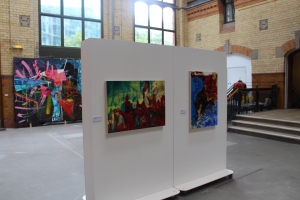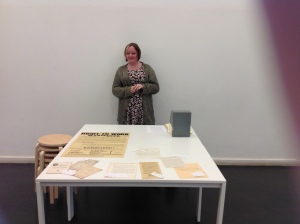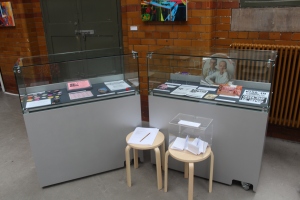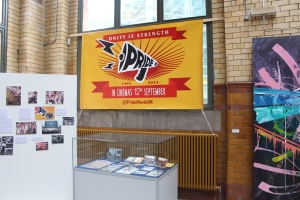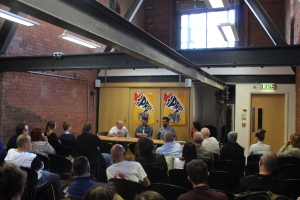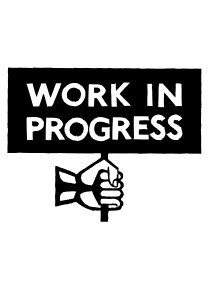A guest post by Janneke Geene, Head of Business Development
Back in October of 2014 I was lucky enough to spend a week in Russia, visiting museums and galleries in Moscow and St Petersburg, for a British Council project. The project spans the BRIC countries: Brazil, Russia, India and China. The BRIC countries are generally seen as countries of growth and expansion. With that comes a possible increased flow of tourists from those countries to the UK. The aim of the project is to find out what tourists from the BRIC countries expect when they visit UK museums and galleries (based on what they are used to ‘back at home’) and how the UK sector can make adaptations to be more welcoming and attractive to BRIC tourists. While colleagues from other venues went to Brazil, India and China, I went on the trip to Russia with a colleague from Manchester Museum and together we visited some 15 museums and galleries in the space of 6 days. To say it was an eye-opener would be an understatement – and in very unexpected ways.
Before our trip we had a meeting with Russian Visit Britain representatives who gave us a little bit of information (Russian tourists generally don’t speak English, but are keen on cultural and educational experiences when they travel) but who also expressed their surprise at our visit as in their view British museums and galleries are generally far ‘better’ than Russian ones.
Our visit to museums and galleries as diverse as the State Darwin Museum (Moscow), the Moscow Lights Museum and the State Museum of Political History of Russia (St Petersburg) had a number of things in common that are significantly different from our experiences of museums and galleries back in Britain. What is always an easy and non-confrontational opening question in Britain: How may visitors do you get a year?, turned out to be mostly met by surprise and a wave of the hand – a lot of the venues don’t know the figures. It would be easy to judge that lack of knowledge when viewed through the prism of British (and possibly Western European) cultural funding streams and practice. However, as we had the privilege of spending quite some time with colleagues in Russia, we realised we were being naive in assuming. Assuming almost anything is naive in Russia.
After all, much as Russia has had deeply significant cultural relationships (music, art, to name but a few) with what we class as Western Europe over a long period of time, this unimaginably large country is actually half European, half Asian. An extended period of relative isolation has undeniably influenced several aspects of the culture. What were we thinking looking at these organisations with our Western European head on?
 As I am responsible for commercial and income generation activities at People’s History Museum, I had a whole raft of questions (fuelled by as many assumptions?) around shops, cafes and such things, as well as marketing and audience engagement. Again, it would be ever so easy to agree with the Visit Britain representatives that Britain is far ahead of Russia in these things. After all we pride ourselves on our quirky and welcoming cafes (no visit to the museum needed), our independent gift shops (having a museum souvenir shop is so yesterday) and the multitude of engaging activities on offer for our visitors. But who is to say? It turns out Russian people have a love for their museums and galleries, visit often, want to learn lots and on ‘free Sundays’ (the mayor of Moscow has decreed all state run museums and galleries in Moscow, which is 99% of them, need to be open free of charge on a number of Sundays each year) Moscow’s inhabitants fill museums and galleries to bursting point. Russian visitors read the labels attentively and investigate exhibits with enthusiasm. So who are we to compare, judge or assume?
As I am responsible for commercial and income generation activities at People’s History Museum, I had a whole raft of questions (fuelled by as many assumptions?) around shops, cafes and such things, as well as marketing and audience engagement. Again, it would be ever so easy to agree with the Visit Britain representatives that Britain is far ahead of Russia in these things. After all we pride ourselves on our quirky and welcoming cafes (no visit to the museum needed), our independent gift shops (having a museum souvenir shop is so yesterday) and the multitude of engaging activities on offer for our visitors. But who is to say? It turns out Russian people have a love for their museums and galleries, visit often, want to learn lots and on ‘free Sundays’ (the mayor of Moscow has decreed all state run museums and galleries in Moscow, which is 99% of them, need to be open free of charge on a number of Sundays each year) Moscow’s inhabitants fill museums and galleries to bursting point. Russian visitors read the labels attentively and investigate exhibits with enthusiasm. So who are we to compare, judge or assume?
Income generation is fairly irrelevant at the moment as most museums and galleries receive state funding. Would the sector in Britain be quite so ‘sophisticated’ in their ‘secondary spend’ offer were there no financial imperative?
Audience engagement happens because by and large the audiences we observed were very keen to engage.
Of course this is not the whole picture – Moscow, as one Scottish person on the metro pointed out to us, is not at all representative of Russia, most of Russia is rural with vast swathes of people not having access to the world class collections displayed in Moscow and St Petersburg. Yet most state museums seemed to have a busy programme of touring changing exhibitions. Much to think about.
St Petersburg, as we learnt, has always been the rebel, the town that can get away with a few things. So it is no coincidence that it is the home of the State Museum of Political History of Russia, a museum where deep reflective thinking about the significance of its collections in relation to the country’s political history (and present) is in evidence in every display. A museum that has managed to find a way to survive for decades, despite the fact it tells a deeply complex (and probably controversial) story. It uses choices as a theme and provides a walk through Russian political history as a series of choices made and choices not made and their consequences.
The most memorable thing about the visit will be the colleagues though – on the whole the colleagues we met were very deep thinkers, having had to make sense of Russia’s complex history and recent history, passionate about their work, keen to collaborate where possible (not so easy at the moment) and extremely knowledgeable about their subject matter.
And Russian tourists visiting museums and galleries in the UK? Well, they do indeed mostly not speak English, so doing something about the language barrier is a must; those Russians who can travel abroad want an educational/cultural experience as part of their trip; they mostly travel as part of an organised group (much easier if you don’t speak English); they are interested in pointers that pull out the relevance of objects to their history and they are used to paying and admission fee, so will love getting free admission. Not rocket science really.
Oh, and the shop and cafe – those Russians who can travel abroad by and large make it into a very special occasion and spend quite a lot of money.
And don’t forget – just as it is prohibitively expensive for us to use the internet while travelling abroad, so it is for them, so promoting the fact you’ve got Wifi is a win.
 And if you are ever lucky enough to visit Moscow, do make a beeline for the Moscow Lights Museum – a tiny, quirky, private museum featuring an amazing collection of old Moscow streetlights and their history. It turns out that Moscow streetlights through the ages is Russian history in a nutshell, complete with the large oak controllers’ desk, where, at one time, the head controller, literally with one flick of a switch, could turn out all the streetlights in Moscow if deemed necessary. If only I spoke Russian I’d translate their website and leaflet to make it more accessible to British tourists venturing East.
And if you are ever lucky enough to visit Moscow, do make a beeline for the Moscow Lights Museum – a tiny, quirky, private museum featuring an amazing collection of old Moscow streetlights and their history. It turns out that Moscow streetlights through the ages is Russian history in a nutshell, complete with the large oak controllers’ desk, where, at one time, the head controller, literally with one flick of a switch, could turn out all the streetlights in Moscow if deemed necessary. If only I spoke Russian I’d translate their website and leaflet to make it more accessible to British tourists venturing East.









